- Top
- Destinations
- Osaka Tennoji Zoo – Must-See Animals with Information on Access and Entrance Fees
Osaka Tennoji Zoo – Must-See Animals with Information on Access and Entrance Fees
2023.03.14
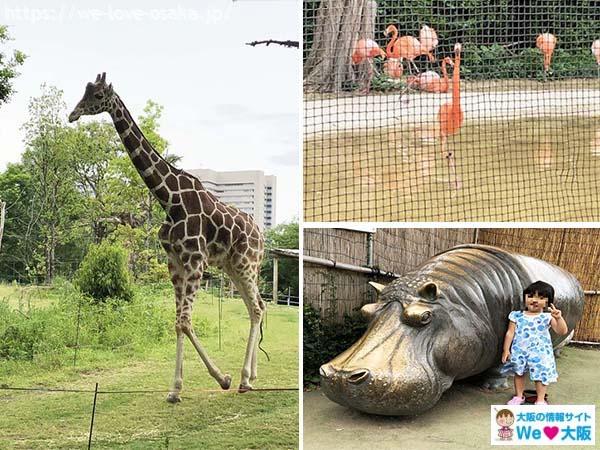
Tennoji Zoo is one of the best sightseeing spots in Tennoji, especially for families with kids or as a date.
It’s one of the oldest zoos in Japan and features over 200 kinds of different animals.
目次
1. Animals from the African Savanna
First of all, let’s start with a lot of major animals!
1-1. Giraffes
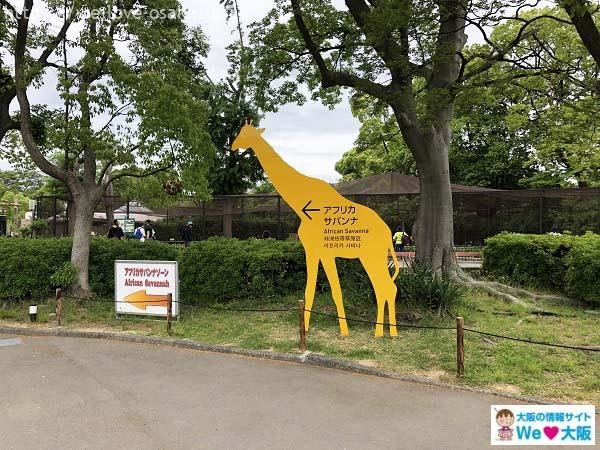 This sign is easy to find and will help guide you toward the African Savannah area of the zoo.
This sign is easy to find and will help guide you toward the African Savannah area of the zoo.
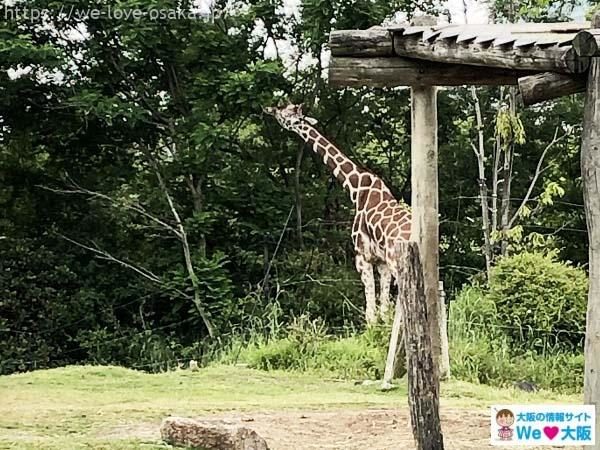 This giraffe was feasting on some tasty leaves.
This giraffe was feasting on some tasty leaves.
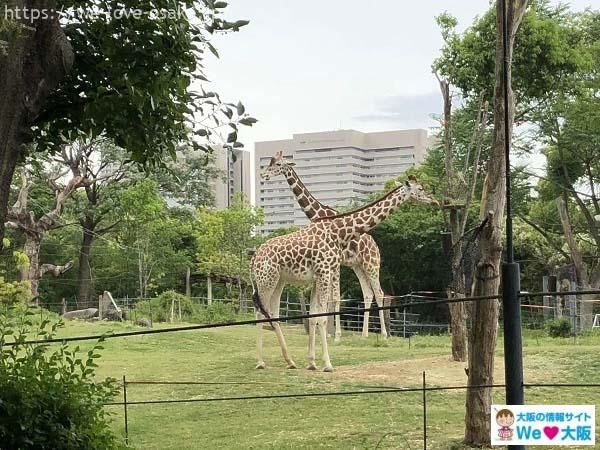 Here’s two giraffes from a different perspective.
Here’s two giraffes from a different perspective.
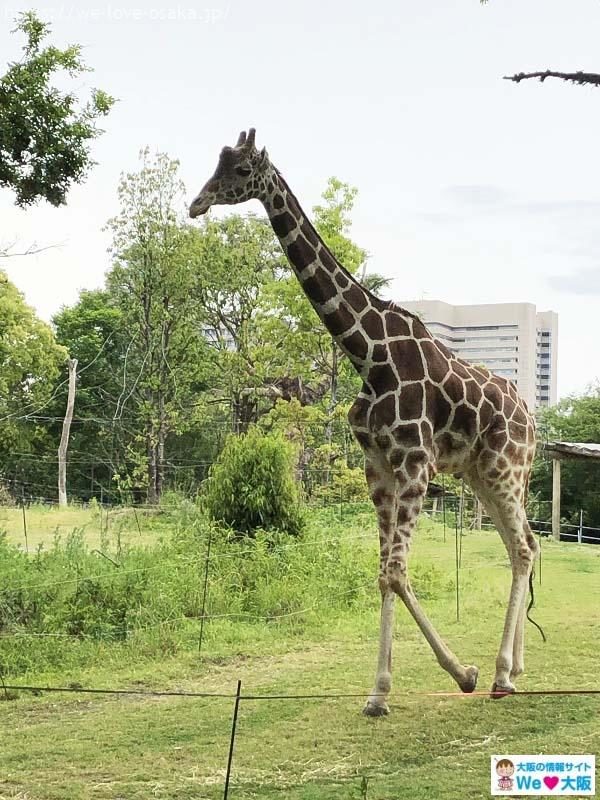 It looks like it’s chasing after me!
It looks like it’s chasing after me!
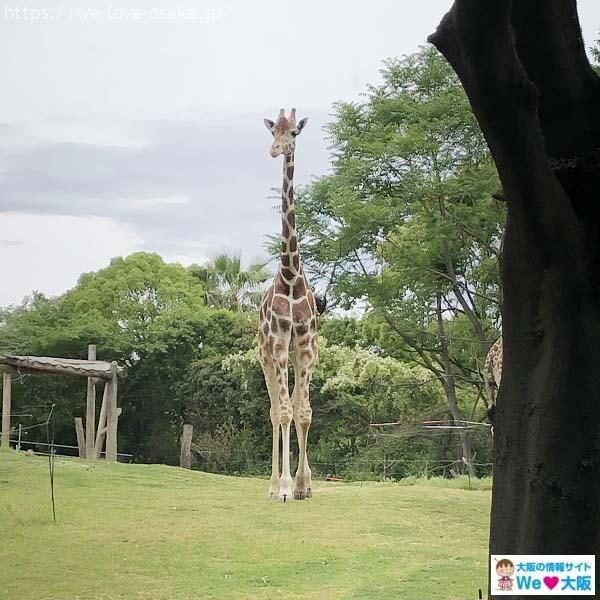 How elegant!
How elegant!
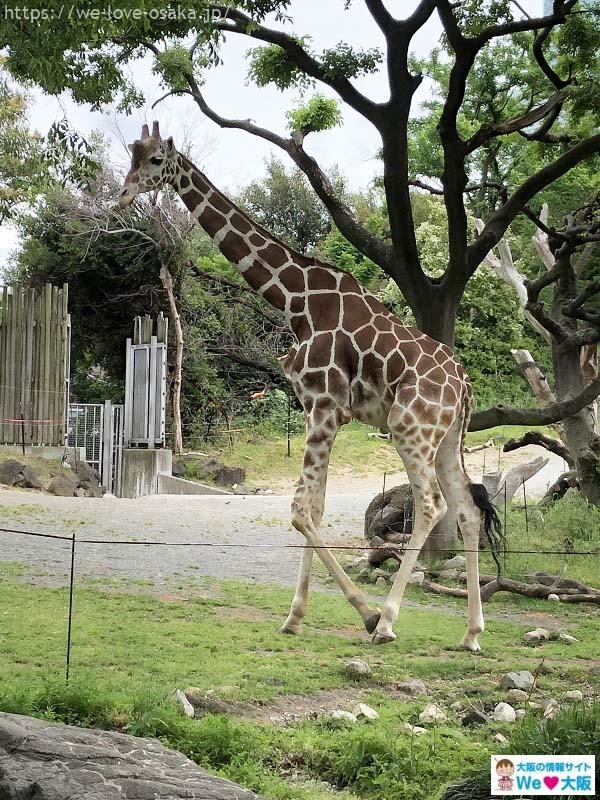
Classification: Bovine Giraffes
Exhibition place: African savanna zone and surrounding area 《African savanna zone》
Distribution area: Sub-Saharan Africa
Habitat: Savannah and arid grassland
Savannah and arid grassland: Some species are endangered
1-2. What is an Eland?
Have you ever seen an eland before?
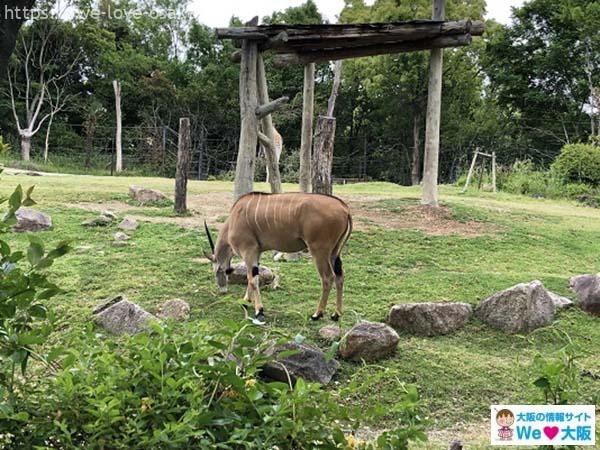 It looks like a cross between a horse and deer.
It looks like a cross between a horse and deer.
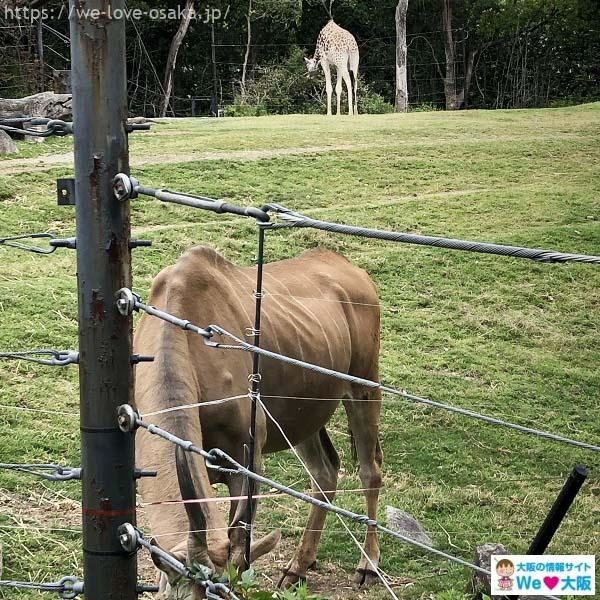
Category: Bovines Bovidae
Exhibit location: Africa savanna zone and surrounding animals <>
Distribution area: Central/South Africa
Habitat: Shrublands with few trees
1-3. Hippo
Next let’s check out these huge animals!
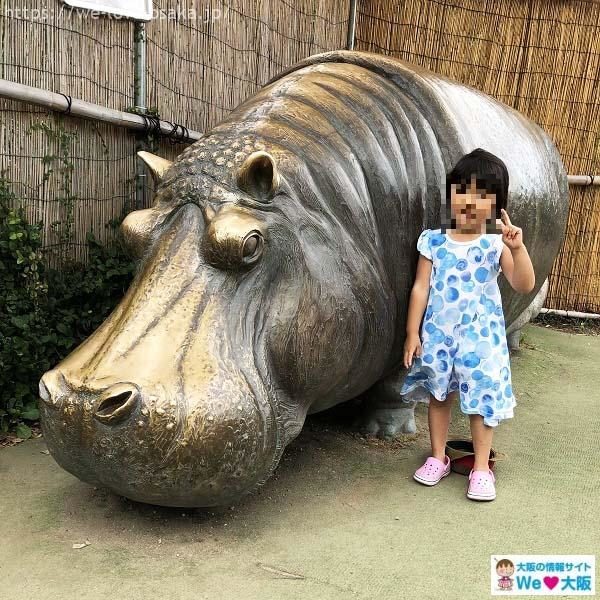 This statue is huge! And hippos can actually grow to be this large. It looks like 4 children could ride on its back comfortably.
This statue is huge! And hippos can actually grow to be this large. It looks like 4 children could ride on its back comfortably.
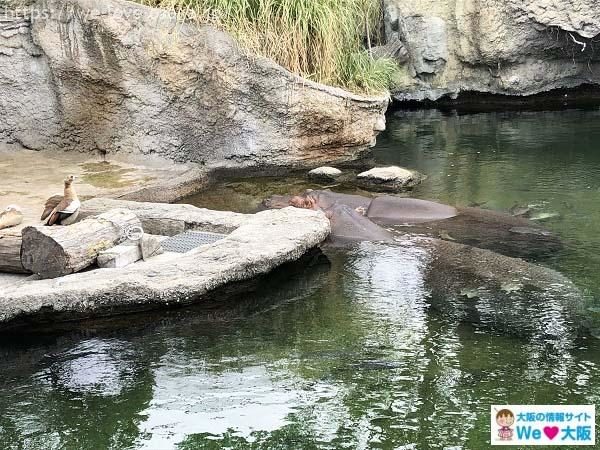 The real hippos are also big. They’re a bit hard to spot when they’re underwater. They blend in with their surroundings and look like rocks.
The real hippos are also big. They’re a bit hard to spot when they’re underwater. They blend in with their surroundings and look like rocks.
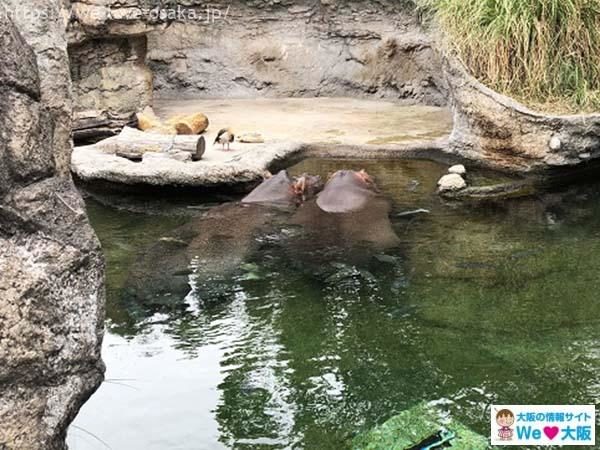 The length of a hippo is 3.3-5.2m. It’s easy to imagine hippos as small because they’re cute, but they’re huge! Even though they’re herbivorces, if you catch them yawning, you’ll notice their long fangs.
The length of a hippo is 3.3-5.2m. It’s easy to imagine hippos as small because they’re cute, but they’re huge! Even though they’re herbivorces, if you catch them yawning, you’ll notice their long fangs.
In fact, the pool in the hippo at Tennoji Zoo is Japan’s first underwater observation pool! Please check with your own eyes what the hippopotamus looks like in the water!
Classification: Bovididae
Exhibit location: African savanna zone and surrounding animals <<African savanna zone>>
Distribution area: Sub-Saharan Africa Endangered Species (VU)
1-4. Wolves
Why are wolves always portrayed as evil in movies?
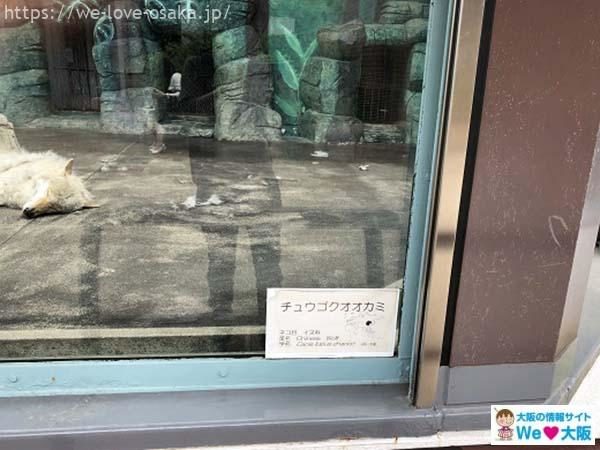 They are sleeping so peacefully.
They are sleeping so peacefully.
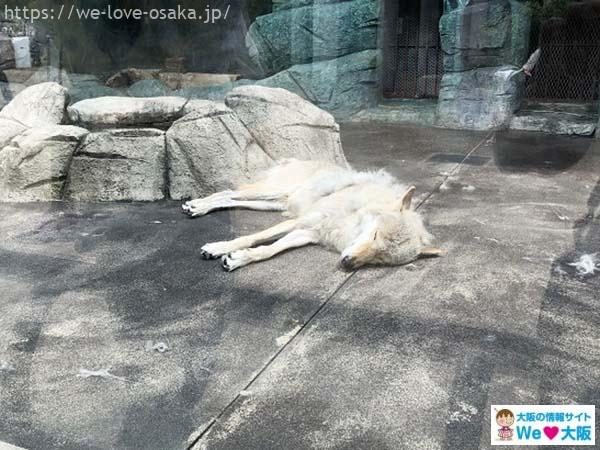 It’s really similar to a dog sleeping on a hot summer day right? Despite their negative portrayal, wolves have a pack mentality. The bond between parents and children is also strong.
It’s really similar to a dog sleeping on a hot summer day right? Despite their negative portrayal, wolves have a pack mentality. The bond between parents and children is also strong.
Classification: Feline canine
Exhibit location: African savanna zone and animals in the surrounding area 《Wolves, tigers and wildcats》
Distribution area: Himalayan region of India from Southwest Russia, etc.
Habitat: Forest area, mountainous area
1-5. Mouflon
Moving onto the next animal, here is the mouflon.
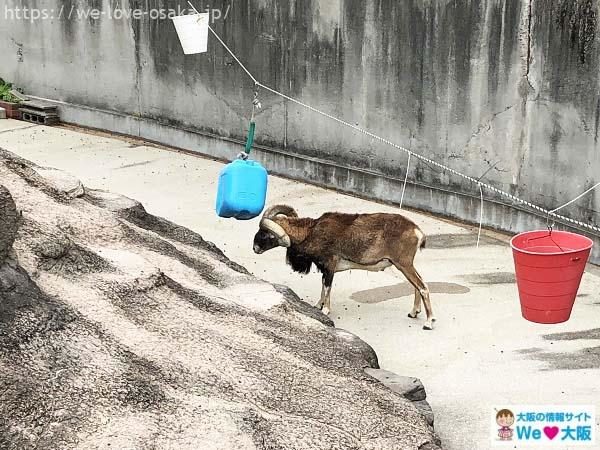 The sharp horns look like twin tails.
The sharp horns look like twin tails.
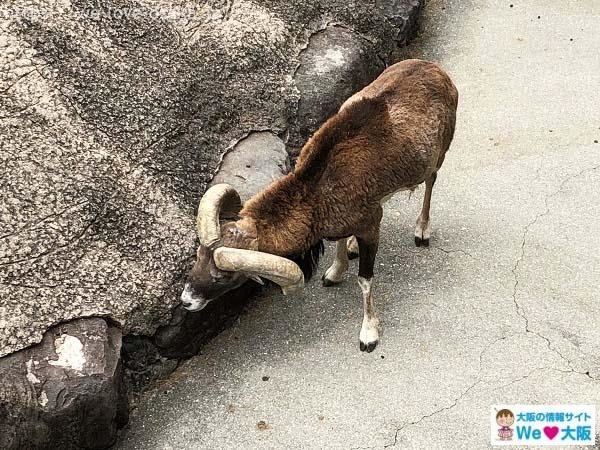 This is a Mouflon. It is said to be the ancestor of the domestic sheep. Only males have horns. Their natural habitat is mountainous terrain, so the rugged rock surface is also moved. Sheep’s wild ancestors are active.
This is a Mouflon. It is said to be the ancestor of the domestic sheep. Only males have horns. Their natural habitat is mountainous terrain, so the rugged rock surface is also moved. Sheep’s wild ancestors are active.
Classification: Bovine Oxidae
Exhibit location: African savanna zone and surrounding areas <<Others
Distribution area: Caucasus region, Iraq, Iran, etc.
IUCN conservation assessment: endangered species
1-6. Red Pandas
 If you like fluffy things, you should definitely check out the Red Panda.
If you like fluffy things, you should definitely check out the Red Panda.
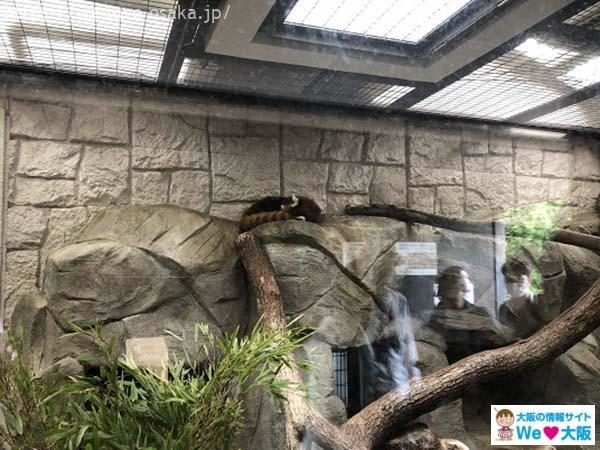 Woooooooo! I can’t wait! I can’t wait for my tail!
Woooooooo! I can’t wait! I can’t wait for my tail!
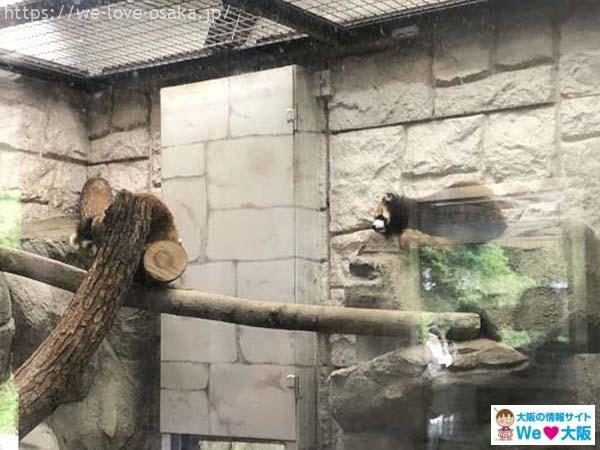 They are universally loved. And why not? They look like a small bear cat, and actually that’s what panda means in Chinese too!
They are universally loved. And why not? They look like a small bear cat, and actually that’s what panda means in Chinese too!
Classification: Cat eyes (Carnivora) Raccoon family
Exhibit location: African savanna zone and surrounding area 《Others》
Distribution area: Southern China to Himalayan Myanmar Northern
Habitat: Forests and bamboo forests with an altitude of 1000-3500 m
Conservation of IUCN Situation assessment: Endangered Species
2. The Reptile House
Moving onto the reptile eco-house called “Eiffer.” Like the African savanna zone, it is gaining popularity for its ecological exhibits. I would like to introduce some of the animals living here.
2-1. Tortoise
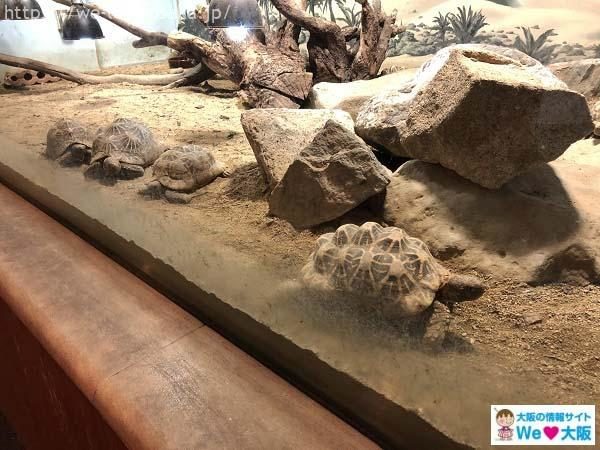 First, the turtle. It has a very unique shell and is named after the radial pattern. The little herbivores are all lined up.
First, the turtle. It has a very unique shell and is named after the radial pattern. The little herbivores are all lined up.
Classification: Turtle’s tortoises
Exhibit location: Animals in the African savanna zone and surrounding areas 《Eiffer》
Distribution area: Southern part of Madagascar
Habitat:Dry forest
Conservation of IUCN Situation assessment: Endangered species (CR)
2-2. Powerful! Aldabra giant tortoise
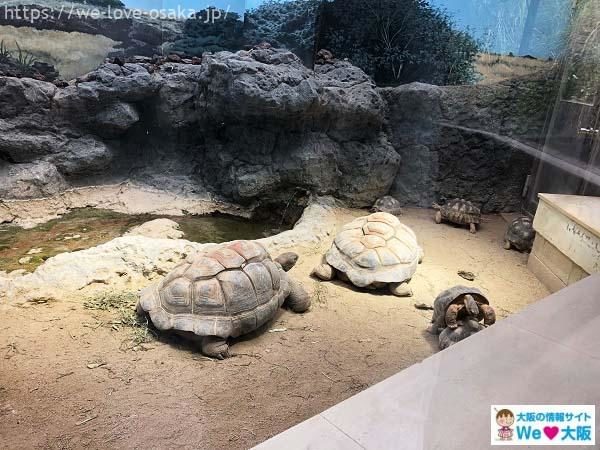 Next is a big turtle. Aldabra giant tortoise is a long-lived turtle which is said to live for 150 years. They say that they are basic herbivores, but they are also omnivores who sometimes eat dead animals. In the wild, heat stroke is often the cause of death. Well, that would be true if you were in a hot place with such a heavy shell on your back……. By the way, the research result shows that the ribs of the turtle shell were deformed.
Next is a big turtle. Aldabra giant tortoise is a long-lived turtle which is said to live for 150 years. They say that they are basic herbivores, but they are also omnivores who sometimes eat dead animals. In the wild, heat stroke is often the cause of death. Well, that would be true if you were in a hot place with such a heavy shell on your back……. By the way, the research result shows that the ribs of the turtle shell were deformed.
Classification: Turtles and tortoises
Exhibit location: Animals in the African savanna zone and surrounding area
Distribution area: Seychelles and Aldabra Islands
Habitat: Grasslands along the coast, shrubs inland, etc.
2-3. Mississippi crocodile
After checking out the cute turtles, let’s move on to some more dangerous reptiles.
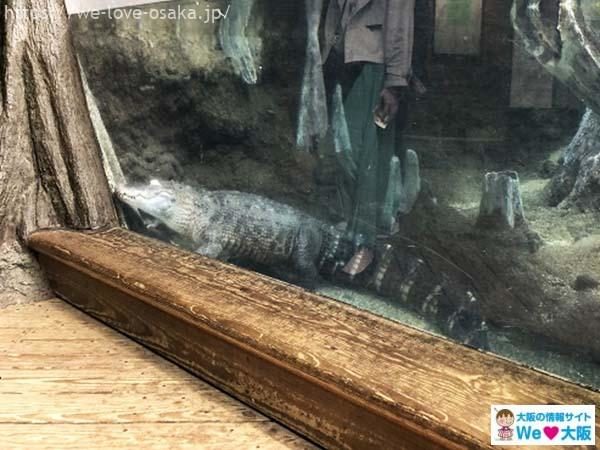 It’s rare to see the crocodile so close to the glass.
It’s rare to see the crocodile so close to the glass.
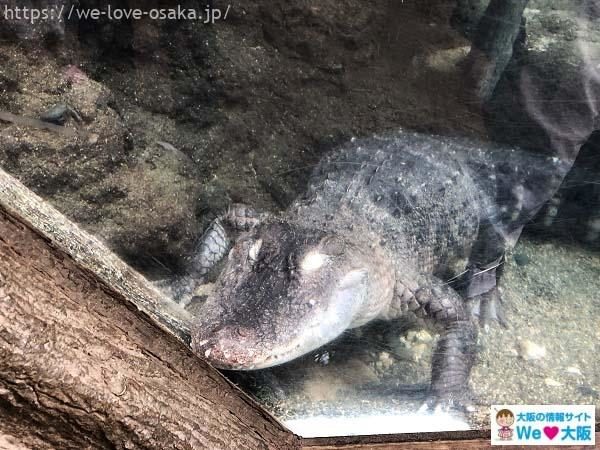 It’s scary to see it from up close. Are your eyes white? This is the Mississippi crocodile. By the way, some kinds of turtles and crocodiles seem to be male or female depending on the temperature during their growth. In the case of Mississippi crocodile, if it is raised at 33.5℃, it becomes male, and if it is raised at 30℃, it will be female. Why did that mechanism come about… Do you know or don’t you know…
It’s scary to see it from up close. Are your eyes white? This is the Mississippi crocodile. By the way, some kinds of turtles and crocodiles seem to be male or female depending on the temperature during their growth. In the case of Mississippi crocodile, if it is raised at 33.5℃, it becomes male, and if it is raised at 30℃, it will be female. Why did that mechanism come about… Do you know or don’t you know…
Classification: Crocodile Crocodile Family
Exhibit location: African Savannah Zone and the surrounding area animals ʻEifer
Distribution area: Southeastern United States
Habitat: Plain rivers, lakes and marshes
2-4. Australian green tree frogs
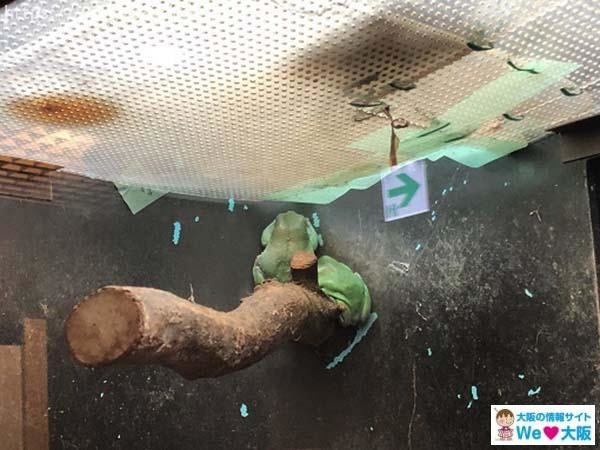 It’s called a tree frog, so I imagined a tiny frog that’s often found when playing in the countryside, but it’s pretty big. It seems that it may grow up to 11 cm. Moreover, it can live for more than 20 years. And surprisingly, they may eat rats.
It’s called a tree frog, so I imagined a tiny frog that’s often found when playing in the countryside, but it’s pretty big. It seems that it may grow up to 11 cm. Moreover, it can live for more than 20 years. And surprisingly, they may eat rats.
Classification: Frog-eyed tree frog
Exhibit location: Animals in the African savanna zone and surrounding area 《Eiffer》
Distribution area: Southern New Guinea and Northern Australia
Habitat: Grassland and forest
2-5. Cranwell’s horned frog
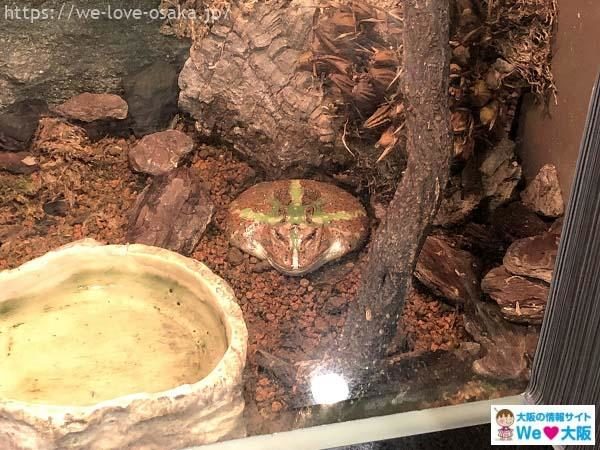 It’s not a manju with a rugged face, this is the Cranwell horned frog. Please search for it online.
It’s not a manju with a rugged face, this is the Cranwell horned frog. Please search for it online.
Classification: Frog-eyed Leptodactylus
Exhibit location: Animals in the African savanna zone and surrounding area 《Eiffer》
Distribution area: Argentina, Brazil, Paraguay
Habitat: Above the forest
2-6. African clawed frog
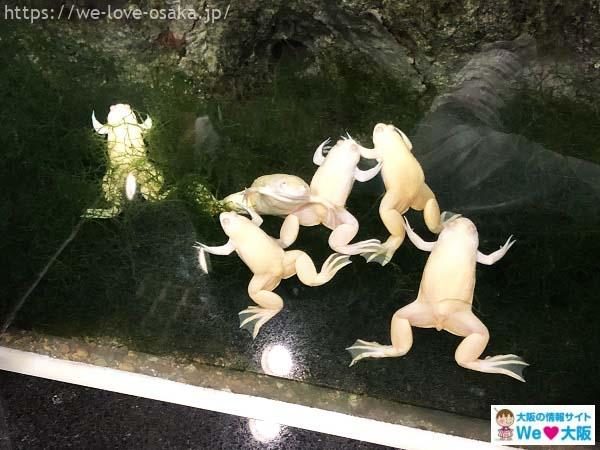 Wow! They stayed still for such a long time, I wasn’t even sure if they were real. When you think of frogs, usually you imagine them hopping around on the ground, but this frog seems to live almost completely underwater. He is a good swimmer, but doesn’t jump as much as other frogs do.
Wow! They stayed still for such a long time, I wasn’t even sure if they were real. When you think of frogs, usually you imagine them hopping around on the ground, but this frog seems to live almost completely underwater. He is a good swimmer, but doesn’t jump as much as other frogs do.
Category: Frog-eyed Komorigae
Exhibit location: Africa savanna zone and surrounding area 《Eiffer》
Distribution area: Central/South Africa
Habitat: Freshwater
2-7. Nile monitor lizard
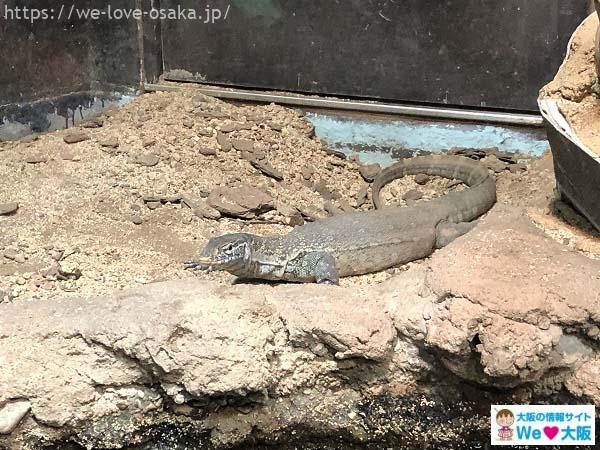 When it comes to lizards, I feel like I’m a little rude when I’m walking outside and sometimes I’m a little rude, but… I don’t have that kind of humility on the Nile monitor. This lizard is ferocious enough to eat cats. It seems that you can keep it as a pet, but since it is ferocious anyway, it seems that you rarely miss it. Please be careful.
When it comes to lizards, I feel like I’m a little rude when I’m walking outside and sometimes I’m a little rude, but… I don’t have that kind of humility on the Nile monitor. This lizard is ferocious enough to eat cats. It seems that you can keep it as a pet, but since it is ferocious anyway, it seems that you rarely miss it. Please be careful.
Category: Lizard suborder Monitor lizard
Exhibit location: African savanna zone and surrounding area 《Eiffer》
Distribution area: African continent south of the Sahara Desert
Habitat: Deserts, rivers and lakes
3.Animals in the koala monkey area
3-1. Egyptian fruit bat
 Let’s check out the nocturnal house and see what creatures of the night are living here.
Let’s check out the nocturnal house and see what creatures of the night are living here.
 Hmm, what’s in here?
Hmm, what’s in here?
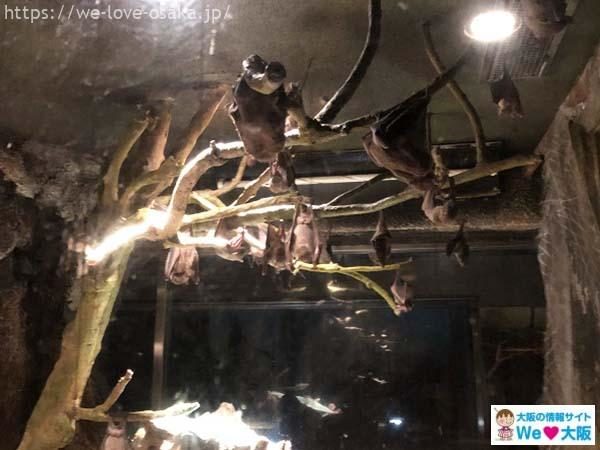 These are Egyptian fruit bats. They eat apricots, figs and bananas. They’re so cute!
These are Egyptian fruit bats. They eat apricots, figs and bananas. They’re so cute!
Classification: Bat order bat family
Exhibit location: Koala monkey area 《Nocturnal animal house》
Distribution area: Arabian Peninsula and around Africa
Habitat: Mainly forest area
3-2. Japanese deer
 Even though it’s quite a big measure at the zoo, it’s Japanese deer which thinks it’s “cute” no matter how many times we see it. It looks like a classic with a blunt female, a black nose and a triangle. Boys have horns, so this is a girl. The white spots appear on the body in summer, but they disappear in winter. It’s a natural polka dot. By the way, Japanese deer lives in places other than Japan.
Even though it’s quite a big measure at the zoo, it’s Japanese deer which thinks it’s “cute” no matter how many times we see it. It looks like a classic with a blunt female, a black nose and a triangle. Boys have horns, so this is a girl. The white spots appear on the body in summer, but they disappear in winter. It’s a natural polka dot. By the way, Japanese deer lives in places other than Japan.
Classification: Boss (Artiodactyla) Deer
Exhibit location: Koala monkey area 《Others》
Distribution area: Japan/Eastern China/Taiwan/Korean Peninsula/Russian Far East Area
Habitat: Forests, grasslands, etc.
4. Bird paradise and animals in the surrounding area
 To all bird lovers all over the country, thank you for waiting! It’s time for the bird paradise park. Let’s go inside!
To all bird lovers all over the country, thank you for waiting! It’s time for the bird paradise park. Let’s go inside!
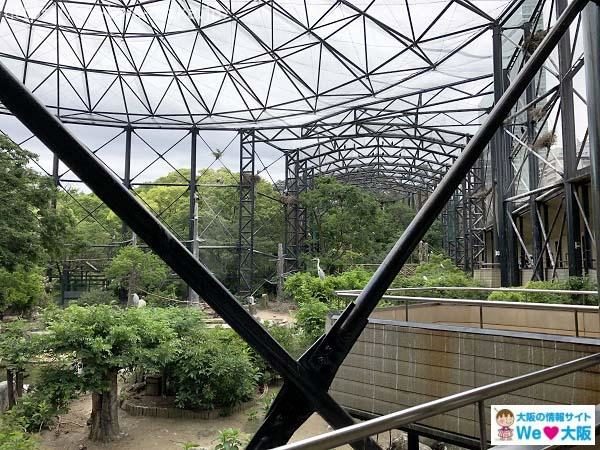 It’s so spacious! It’s 3,170 square meters and 20m at the highest point. And of course, there are tons of birds here!
It’s so spacious! It’s 3,170 square meters and 20m at the highest point. And of course, there are tons of birds here!
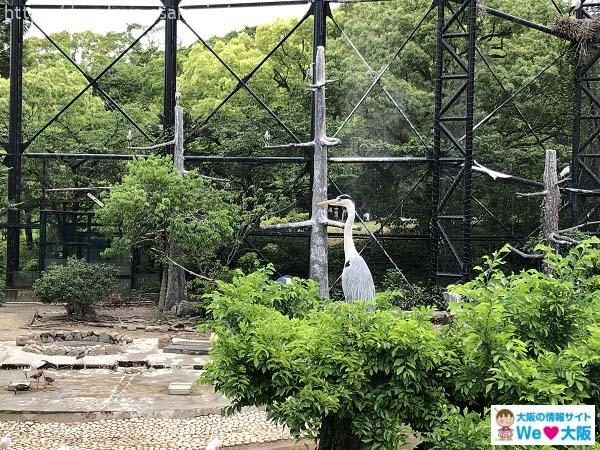
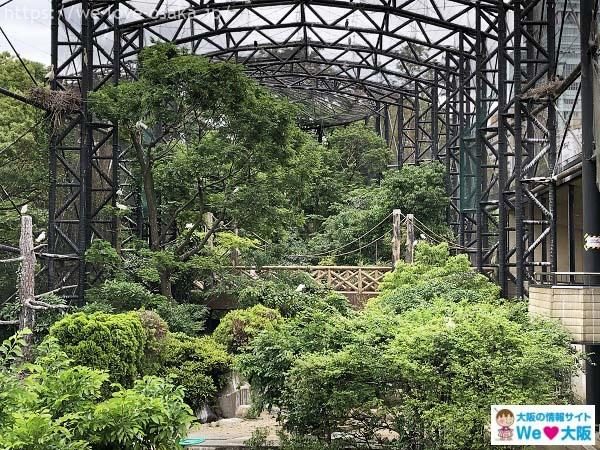 There is plenty of green fauna for the birds to enjoy themselves while you check them out.
There is plenty of green fauna for the birds to enjoy themselves while you check them out.
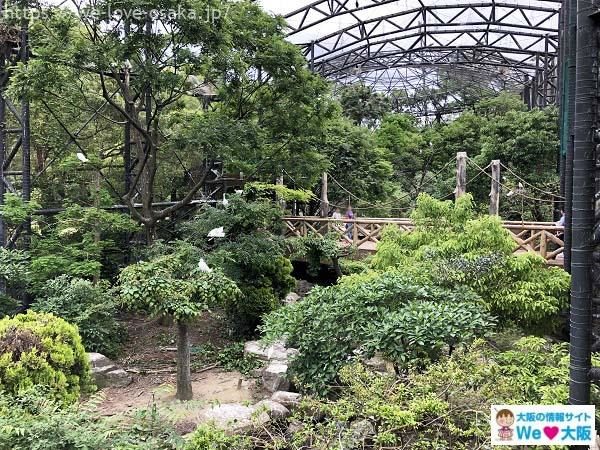 It’s fun to find out what kind of birds live here.
It’s fun to find out what kind of birds live here.
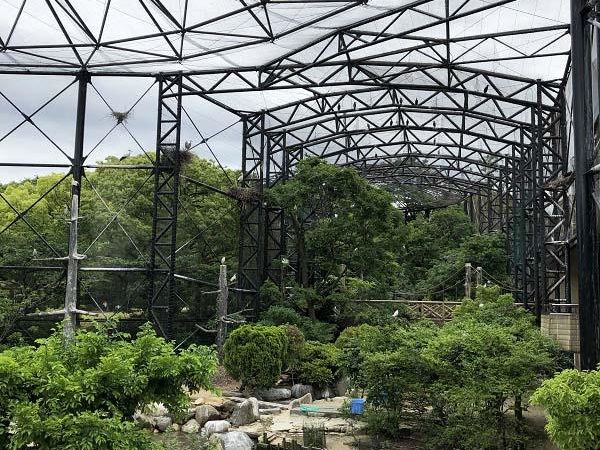 There is also a pond where you might catch a glimpse of some rare birds drinking.
There is also a pond where you might catch a glimpse of some rare birds drinking.
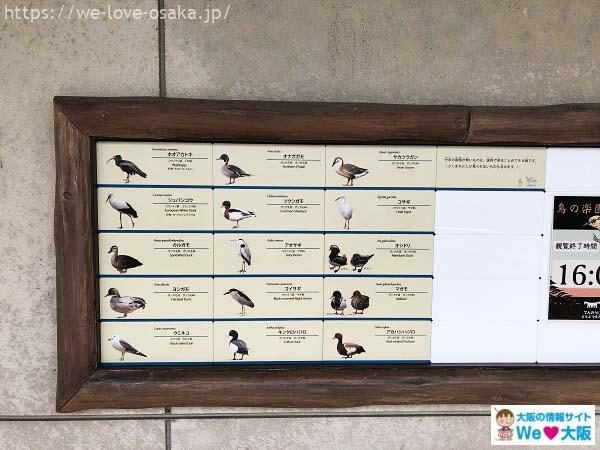 These are all the different kinds of birds you can see. I wonder how many you can spot?
These are all the different kinds of birds you can see. I wonder how many you can spot?
4-1. Snowy owl
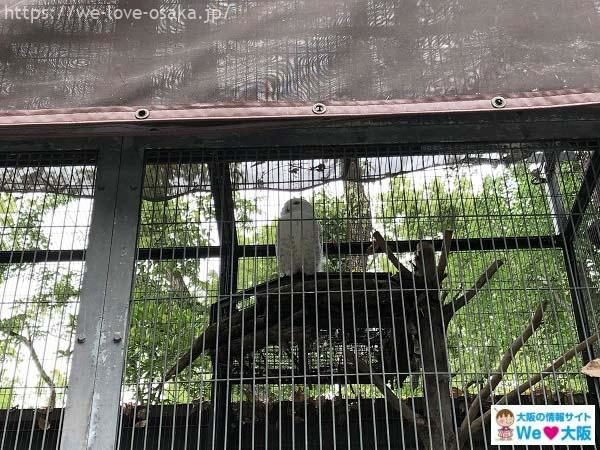 It looks like a stuffed animal. This is the familiar Snow Owl from Harry Potter. Although it is a bird, it looks like a furry creature you want to pet. This snowy owl seems to be 140 to 160 cm wide with its wings spread. Males are mostly white, while females have dark spots on the head and body. It seems that the birds live in the northernmost part of the world. I wonder how they survive the humid summers in Japan.
It looks like a stuffed animal. This is the familiar Snow Owl from Harry Potter. Although it is a bird, it looks like a furry creature you want to pet. This snowy owl seems to be 140 to 160 cm wide with its wings spread. Males are mostly white, while females have dark spots on the head and body. It seems that the birds live in the northernmost part of the world. I wonder how they survive the humid summers in Japan.
Classification: Owl family
Exhibit location: Bird’s paradise and surrounding area <<Others>>
Distribution area: Arctic
Habitat: Tundra zone
IUCN conservation status assessment: Endangered species (VU)
4-2. Great Gray Owl
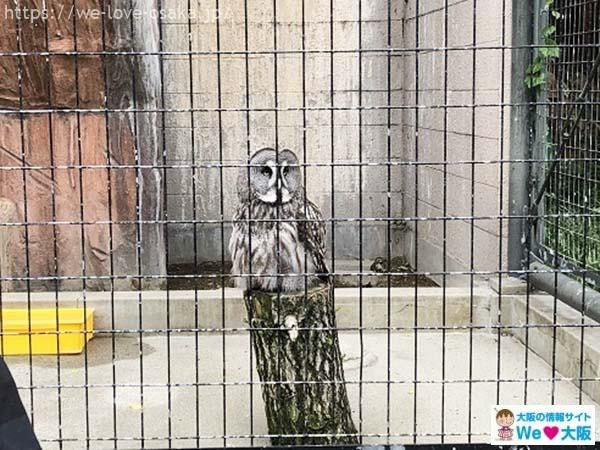 This is quite impressive and it makes quite an impression as well.
This is quite impressive and it makes quite an impression as well.
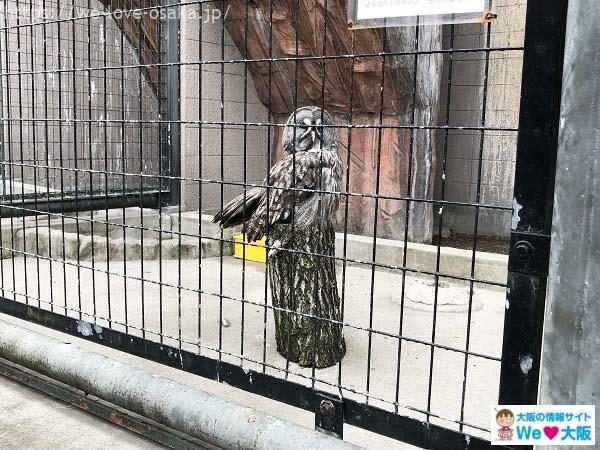 The Great Gray Owl also looks great with a pretty fluffy appearance, but he seems to be quite disappointed when there are no wings. When you think of owls, you have an image of nocturnal nature, but it seems that the Great Gray Owl is active both day and night. Its diet consists mainly of mice. It can approach quickly and without making almost any noise.
The Great Gray Owl also looks great with a pretty fluffy appearance, but he seems to be quite disappointed when there are no wings. When you think of owls, you have an image of nocturnal nature, but it seems that the Great Gray Owl is active both day and night. Its diet consists mainly of mice. It can approach quickly and without making almost any noise.
Classification: Owls Owl Family
Exhibit location: Bird’s Paradise and Surrounding Area <<Others
Distribution area: North America and Northern Eurasia
Habitat: Boreal Forests and Scrublands
5. Petting Zoo Animals
 Let’s check out which animals you can get your hands on, literally!
Let’s check out which animals you can get your hands on, literally!
 It looks busy over here since everyone wants to touch the animals.
It looks busy over here since everyone wants to touch the animals.
5-1. Sheep
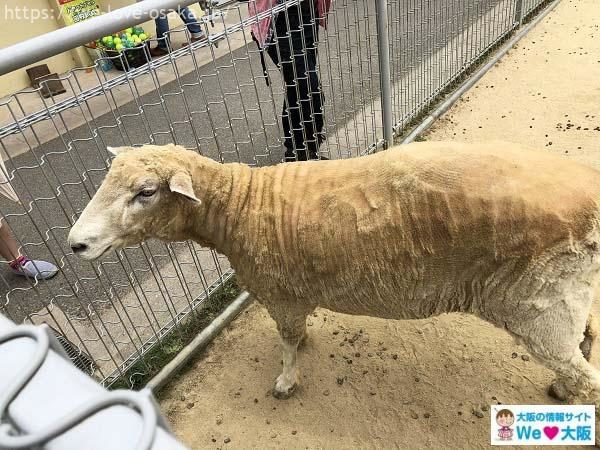 It’s a sheep! I didn’t recognize it with all its wool shaved off for the summer season!
It’s a sheep! I didn’t recognize it with all its wool shaved off for the summer season!
Classification: Bovine (Artiodactyla) Bovidae
Exhibit location: Petting zoo《Fureai open space》
Distribution area: North Livestock species
Habitat: High mountains, deserts, etc.
5-2. Long-eared goats
 I’ve always wanted to raise a goat. Let’s see how friendly they are here. Maybe I can bring this one home with me…
I’ve always wanted to raise a goat. Let’s see how friendly they are here. Maybe I can bring this one home with me…
Classification: Bovine (Artiodactyla) Bovidae
Exhibit location: Petting Zoo《Fureai open space》
Distribution area: Livestock species
Habitat: Lives in a wide range of environments
5-3. Noma horse
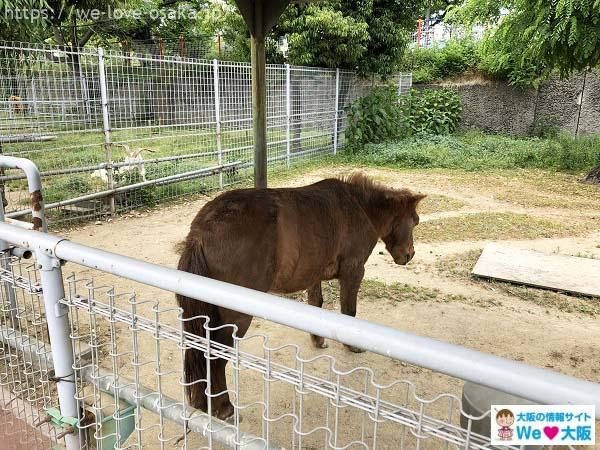 The Noma horse is so friendly, but sometimes he gets tired of hanging out with humans. You can see how tired he was here.
The Noma horse is so friendly, but sometimes he gets tired of hanging out with humans. You can see how tired he was here.
Classification: Equines (Perissodactyla) Equine family
Exhibit location: Petting zoo Fureai open space》
Distribution area: Japan
Habitat: Grassland
5-4. Flamingos
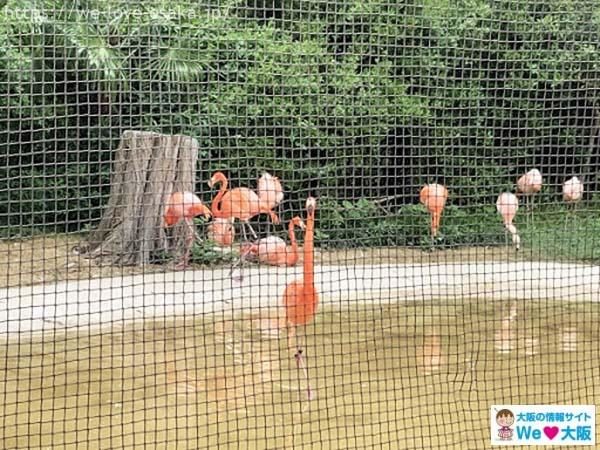 There are a few different types of flamingos here from The Caribbean and Chile. It’s interesting that these pink birds are found in such different areas of the world.
There are a few different types of flamingos here from The Caribbean and Chile. It’s interesting that these pink birds are found in such different areas of the world.
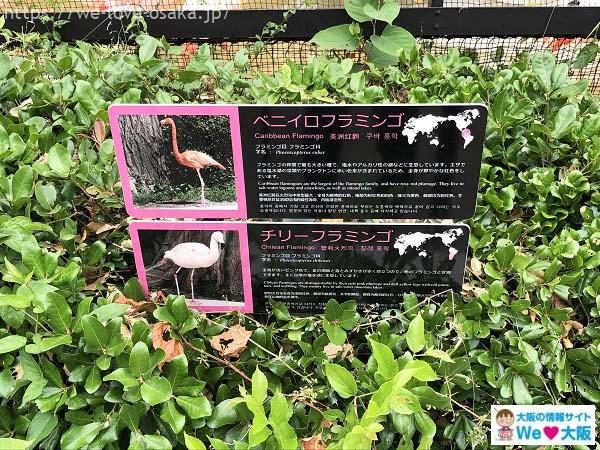 The Caribbean Flamingo is the largest type of flamingo. Chilean Flamingo is a lighter pink color and is characterized by red foot joints, fingers and webs.
The Caribbean Flamingo is the largest type of flamingo. Chilean Flamingo is a lighter pink color and is characterized by red foot joints, fingers and webs.
Classification: Flamingos Flamingo family
Exhibition place: Petting zoo 《Others》
Distribution area: Caribbean coast
Habitat: Salt lagoon, salt water lake, tidal flat, shallow salt coast
Classification: Flamingos Flamingo family
Exhibition place: Petting zoo《Others》
Distribution area: Southern Peru, Southern Brazil, Bolivia, Chile, Uruguay, Argentina
Habitat: Alpine lakes (salt lakes) and coast 4,500m above sea level in the Andes Mountains
5-5. Penguins
 There is also a penguin house in the Pettin Zoo area. It’s black and white just like them!
There is also a penguin house in the Pettin Zoo area. It’s black and white just like them!
There are two types of penguins at Tennoji Zoo.
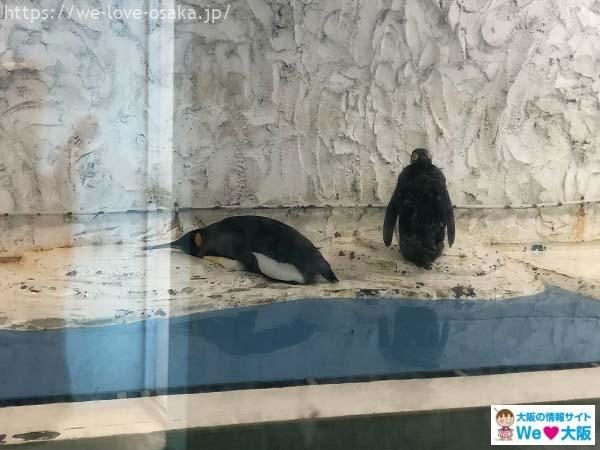 This is the King Penguin. Its head and chest is yellow. Body length is 85-95 cm. It seems to be the second largest type, after the 100-130 cm emperor penguin. When warming eggs, they put them on their feet and cover them with an abdominal skin called an oval sac.
This is the King Penguin. Its head and chest is yellow. Body length is 85-95 cm. It seems to be the second largest type, after the 100-130 cm emperor penguin. When warming eggs, they put them on their feet and cover them with an abdominal skin called an oval sac.
Classification: Penguinidae
Exhibition place: Petting zoo《Others》
Distribution area: Sub-Antarctic island at latitude 45-55°
Habitat: Coast
IUCN conservation status assessment: Mild concern
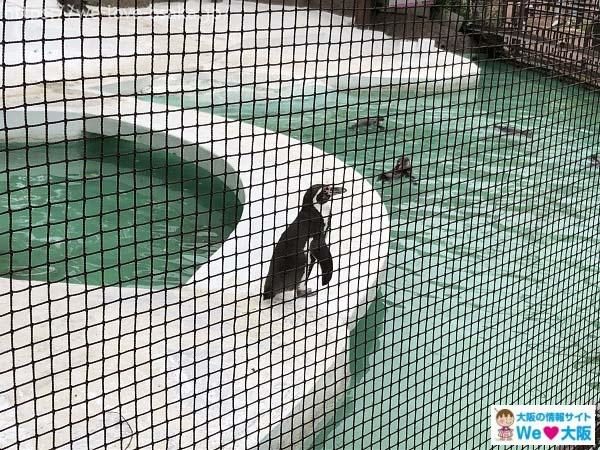 Next is the Humboldt Penguing. They are black and white and about 65 cm long. Humboldt Penguin is quite petite compared to the King Penguin!
Next is the Humboldt Penguing. They are black and white and about 65 cm long. Humboldt Penguin is quite petite compared to the King Penguin!
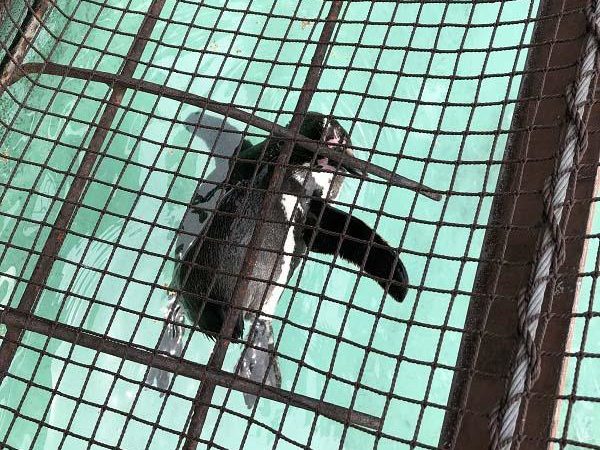 It’s so cute and I love to watch them swim around and around.
It’s so cute and I love to watch them swim around and around.
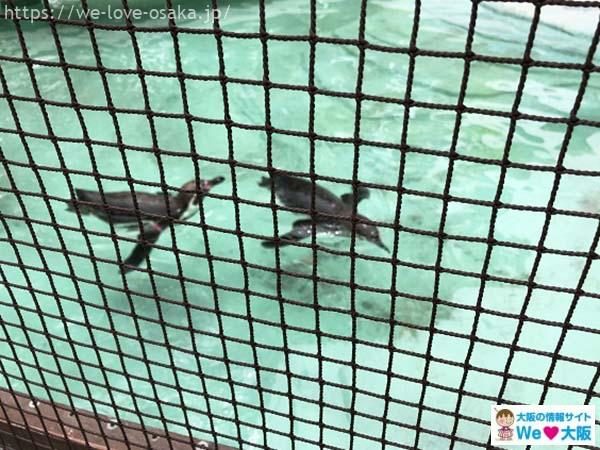
Classification: Penguinidae
Exhibition place: Petting zoo《Others》
Distribution area: Peruvian and Chilean coastal and coastal islands with temperate climate
Habitat: Coastal
IUCN conservation status assessment: Endangered species (VU)
6. Elephants
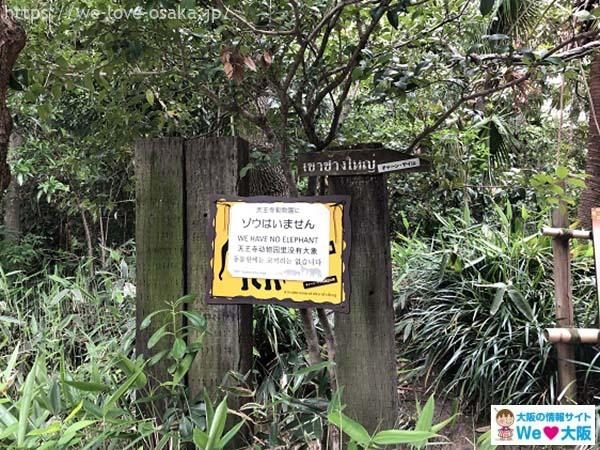 The elephant was the most popular animal at the zoo.
The elephant was the most popular animal at the zoo.
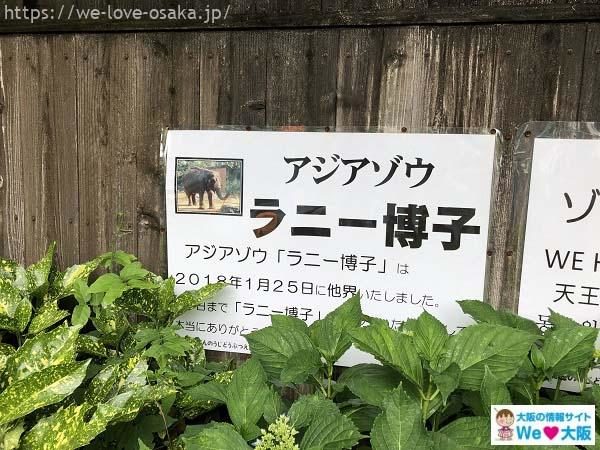 Rani Hiroko, an Asian elephant who lived in an elephant house in the rainforest zone of Asia, passed away on January 25, 2018. I wanted to see you. It’s so sad!
Rani Hiroko, an Asian elephant who lived in an elephant house in the rainforest zone of Asia, passed away on January 25, 2018. I wanted to see you. It’s so sad!
7. Anyway, Tennoji Zoo is fun!
Zoos are great, aren’t they! Just looking at all the different animals is enough to get my heart pumping!
Tennoji Zoo is not that large a zoo.
But that is why we can take the time to love each animal.
I would like you to visit the rhinoceros barns that we were unable to introduce this time.
In August, the “Night ZOO,” an event where you can enjoy the energetic nocturnal animals, will also be held!
Just reading about various people’s experiences on the Internet is exciting.
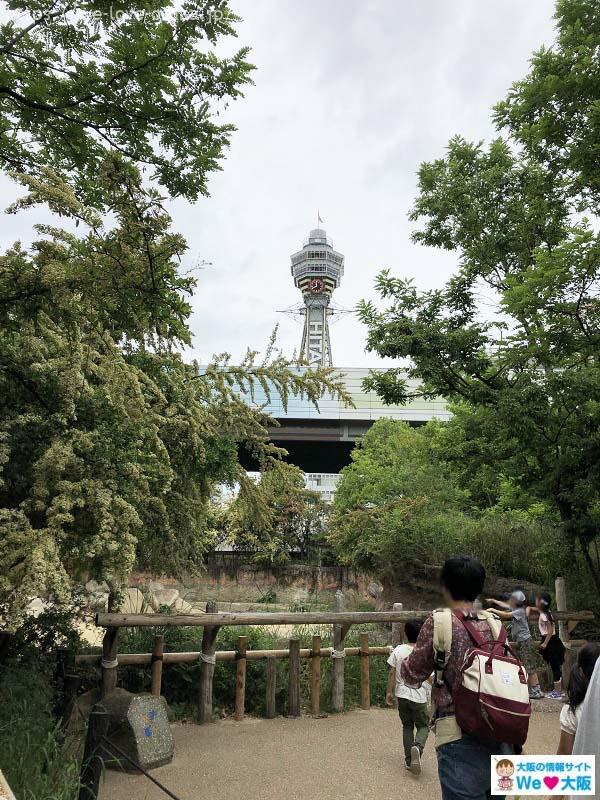 Near Tennoji Zoo is Tsutenkaku!
Near Tennoji Zoo is Tsutenkaku!
After all, the symbol of Osaka is a dignified one~!
▼For more information about Tsutenkaku Tower, click here.
[Osaka Tourism] Fun for Kids! Popular Tsutenkaku Recommendations & Surrounding Area Information.
 Abeno Harukas is on the right.
Abeno Harukas is on the right.
It’s still expensive!
▼For more information about the Abeno Harukas observation deck, click here.
[Abeno Harukas Observation Deck] A spectacular spot for sightseeing in Osaka! Harukas 300.
And straight ahead: ……
 There’s the Osaka Municipal Museum of Art!
There’s the Osaka Municipal Museum of Art!
Lovely building~!
A date at the zoo followed by a visit to an art museum is also a great idea!
Tennoji has everything from zoos to museums to shopping!
If you are coming from far away for sightseeing, I recommend you to stay at a hotel and enjoy Tennoji to the fullest!
▼Click here for information on hotels near Tennoji.
Entrance Fees
| Category | Fees |
| Adult | 500 yen |
| Elementary and Junior High School Students | 200 yen |
| Preschooler | Free |
Free for elementary and junior high school students living or attending school in Osaka City, and residents 65 years old or older in Osaka City.
In addition, elementary and junior high school students enrolled in Osaka municipal schools (including those outside the city) also receive free admission.
Other free provisions are also available.
>Tennoji Zoo Official Website
Parking information
◆No dedicated parking
◆Parking lots in the vicinity
Tennoji Park Underground Parking Lot (500 spaces)
Tennoji Park Chausuyama Entrance Parking Lot (70 cars)
And some have cheaper maximum rates! Please refer to the parking information here.
[Around Tennoji Station] Cheap! Convenient! Recommended hole-in-the-wall parking by area
Access Information
[Access to New World Gate]
◎Osaka Metro Midosuji Line and Sakaisuji Line
Dobutsuenmae Station, Exit #1 / Ebisucho Station, Exit #3, 5-10 min. walk
◎Nankai/JR
Shin-Imamiya Station, Tsutenkaku Exit (East Exit), 10 min. walk
[Access to Tensiba Gate]</span
◎Osaka Metro Midosuji Line and Tanimachi Line
Tennoji Station, Exit 5, 5-10 min. walk
◎JR
Tennoji Station, 5-10 min. walk from Central Exit
◎Kintetsu Minami-Osaka Line
Osaka Abenobashi Station, Exit 7, 10 min. walk
▼Click here for details on how to access the Tensiba Gate.
Basic Information
Address: 1-108 Chausuyama-cho, Tennoji-ku, Osaka City
TEL: 06-6771-8401
Opening hours: 9:30-17:00 (admission until 16:00)
*Open until 18:00 on Saturdays, Sundays, and holidays in May and September (admission until 17:00)
Closed:Every Monday (if the Monday is a holiday, the park is closed on the following weekday)
▼For more information on the Tennoji area, click here.
[Tennoji/Abeno Lunch] Around the station – downtown Spot to the nostalgic Showa-machi area♪.
[Tennoji/Abeno] Stroll through Osaka’s hidden historical sites!
▼If you want to go sightseeing in Osaka.
[Osaka Sightseeing] Thorough explanation by a local. Sightseeing spots in Osaka and recommended food information
▼If you want to date in Osaka.
An Osakaite’s Guide! Recommended spots for couples
Related article
-
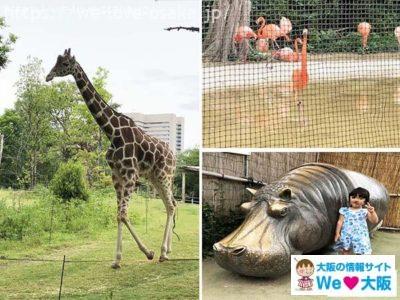
Osaka Tennoji Zoo – Must-See Animals with Information on Access and Entrance Fees
Tennoji Zoo is one of the best……2023.03.14
-

Osaka Tennoji Zoo – Introducing the best animals, opening hours and access information
Many people may say, "When I t……2023.03.14
-
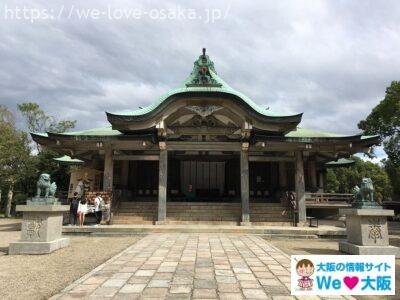
Hokoku Shrine – Visit the shrine honoring Hideyoshi Toyotomi at Osaka Castle
Osaka's most famous tourist at……2023.02.09




















